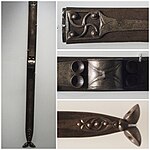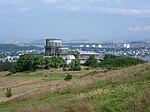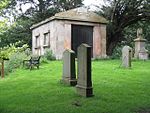Princess Margaret Rose Orthopaedic Hospital
1932 establishments in Scotland2000 disestablishments in ScotlandAC with 0 elementsDefunct hospitals in ScotlandHospitals disestablished in 2000 ... and 3 more
Hospitals established in 1932Hospitals in EdinburghUse British English from August 2017
The Princess Margaret Rose Orthopaedic Hospital was a hospital in Fairmilehead, Edinburgh, opened in 1932 and closed in 2000. After closure, with services transferred to the new Royal Infirmary of Edinburgh, it was demolished and the site sold for housing.
Excerpt from the Wikipedia article Princess Margaret Rose Orthopaedic Hospital (License: CC BY-SA 3.0, Authors).Princess Margaret Rose Orthopaedic Hospital
Margaret Rose Walk, City of Edinburgh Fairmilehead
Geographical coordinates (GPS) Address Nearby Places Show on map
Geographical coordinates (GPS)
| Latitude | Longitude |
|---|---|
| N 55.9 ° | E -3.195 ° |
Address
Margaret Rose Walk
Margaret Rose Walk
EH10 7EY City of Edinburgh, Fairmilehead
Scotland, United Kingdom
Open on Google Maps










